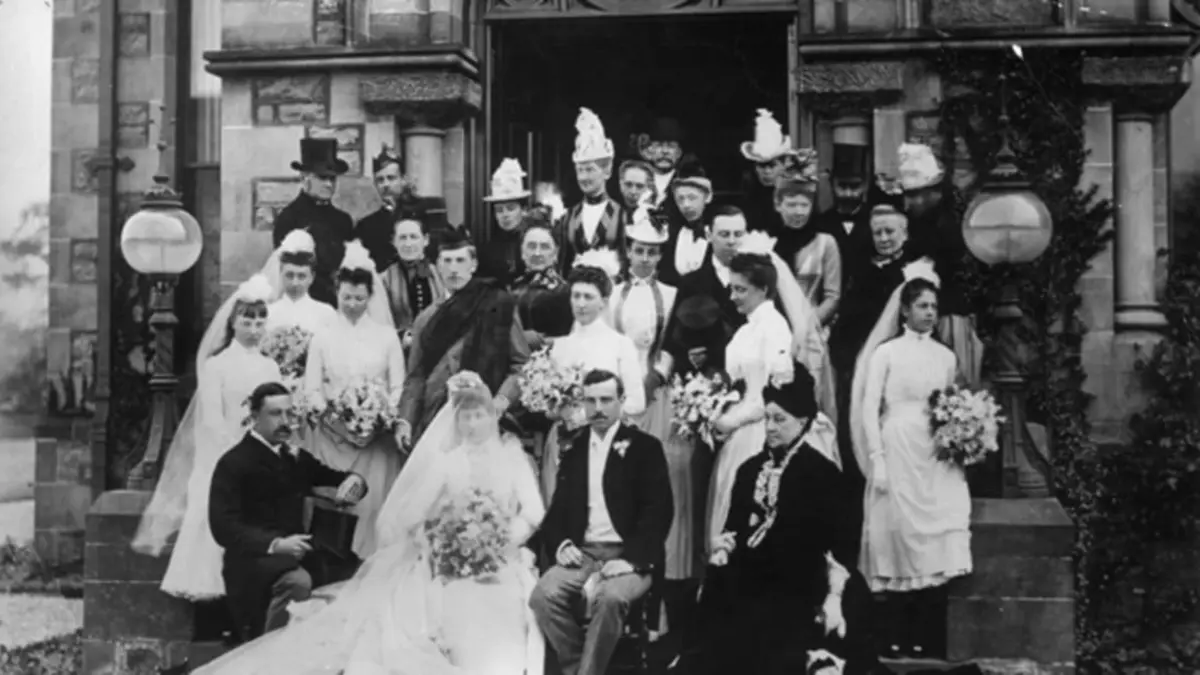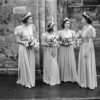It may be surprising to learn that throughout history, bridesmaids and groomsmen had very serious duties and responsibilities. They weren’t always friends and family of the happy couple, moving down the aisle in pairs in color-coordinated tuxedos and bridesmaids’ dresses.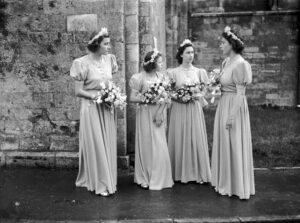
The origins can be traced back to ancient legal traditions and customs. The original purposes were practical and protective, evolving over the centuries into the ceremonial and symbolic roles we know now.
There are biblical accounts of male and female attendants, including Jacob’s marriage to Leah and Rachel (yes, polygamy), and each bride’s female servant in attendance was described as the bride’s maid.
The earliest documented presence of a “wedding party” comes from ancient Rome. Roman law required that a marriage be witnessed by 10 male and 10 female witnesses for it to be legally recognized. Common beliefs at the time included gods, goddesses, and demons—not to mention real physical threats! The women dressed alike to confuse evil spirits, and groomsmen were actually guardsmen with swords at the ready to battle dynastic or political rivals, while the bridesmaids, after successfully baffling supernatural troublemakers, retreated with the bride and helped safeguard her dowry.
As feudal systems developed in the Middle Ages and more “modern” concepts around rights and ownership evolved, courtship was a business transaction—or, if no deal could be struck, it took the form of abduction. This practice, “marriage by capture,” was more common in some regions than others. The groom and his co-conspirators would take the bride by force from her family’s home, often in violent confrontation, and so the “best man” was actually chosen for his skills in combat and to prevent the bride’s escape.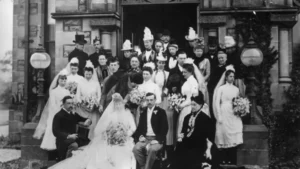
As the Middle Ages gave way to the Renaissance, the role of attendants continued to be primarily protective. Weddings, especially among wealthy families, the aristocracy, and royalty, were prime targets for thieves as well as social, business, or political rivals looking to prevent a union that would combine the strength and fortunes of two families. In some societies, the groomsmen were referred to as the “bride’s knights,” denoting their role as protectors of the marriage ceremony.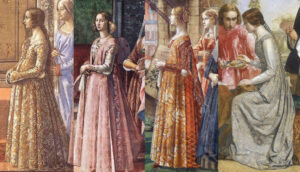
In the following few hundred years, societies modernized, and wedding attendants were selected less for their prowess with a bow and arrow, sword, or blunderbuss. Among the upper classes—especially royalty—attendants were chosen for their wealth, rank, and financial or political relationship with the bride’s and groom’s families.
By the 19th century, the defensive, superstitious, and transactional purpose of bridesmaids and groomsmen diminished, and they were more often friends or relatives of the couple. As dowries became a thing of the past, the maid of honor, once responsible for protecting that treasure, became the leading attendant, helping the bride dress—remember, that usually involved corsets, many layers and petticoats, and voluminous skirts—so it was no small task!
Queen Victoria not only established the tradition of the white wedding dress at her own wedding in 1840; her attendants all wore white as well. The tradition quickly spread among other royal families, followed by aristocratic families, then the wealthy merchant class, and from there into common practice among all levels of society.
The origins of bridesmaids and groomsmen and their largely ceremonial roles are rooted in biblical, ancient and historical tradition. No longer protectors of fortune, business alliances or virtue, they are now honored witnesses to the most personal and celebrated occasion: marriage.

E. Golden Moments
Now, whether the wedding is an intimate ceremony or a lavish spectacle, Ball Event Center offers the perfect site for celebration. The versatile spaces, attentive staff, and trusted vendors can be counted on to provide convenience, comfort and peace of mind, from the first walk down the aisle to the last dance of the night.
Start planning your Big Day with Ball Event Center – Contact Us Today!

